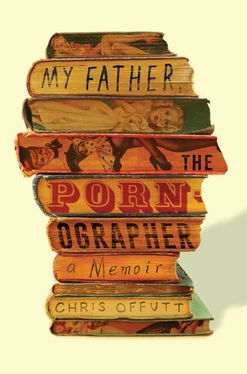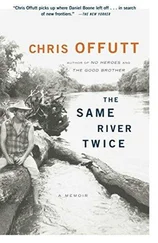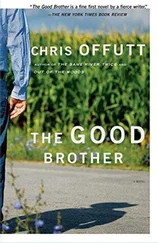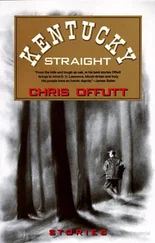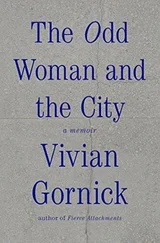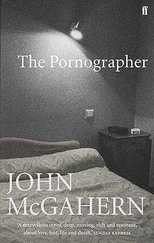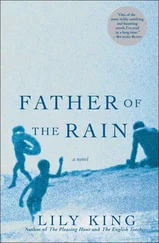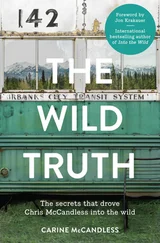Questions were seldom a good idea with Dad, as he tended to interpret them as criticism. Peace was maintained by agreeable nods and his preferred response of “Yes, sir.” As a result, I never asked which particular heating ducts held the bounty. Neither did my siblings, who’d also been repeatedly informed of secret caches about the house. He told each of us that he’d stored semi-precious stones outside the back door, strewn among a “rock garden” consisting of gravel and creek rock. It was a miniature shrine to a crumbling statue of Thulsa Doom, a powerful necromancer in the fictional world of Conan the Barbarian. Dad wrote nine novels set in Robert E. Howard’s imaginary Hyborian Age, using the profits to enclose a side porch. Etched into the cement floor was “Crom,” the name of Conan’s personal god. In a very real sense, the new room represented the booty of Conan, while the valuable gems in the yard turned out to be worthless rocks polished smooth in a geologist’s tumbler.
Many years ago a friend of mine from a wealthy family in New England told me that, upon hearing of an elder’s death, the survivors rushed to the bank to clean out the safe-deposit box. Cash, jewelry, and bearer bonds were up for grabs. After Dad died, my brother and I undertook our quest for plunder as a team to avoid the appearance of “rushing to the floor vents.”
We began with those nearest to Dad’s chair and expanded concentrically, room by room. The metal vent covers rested in slots above the ductwork, which ran like veins throughout the house. I got on my hands and knees and inserted a mirror into the openings while my brother bounced the beam of a flashlight along the horizontal passages. We found plastic soldiers, Tinker Toys, Barbie shoes, spiderwebs, mouse droppings, and finally a canvas bag layered with dust. We lifted it onto the floor and crouched before it. Inside was a velvet fabric wrapped around objects with very little weight. We slowly unfolded the cloth, rapt and solemn in the face of our father’s fabled treasure: a soup ladle, a salad fork, and two very small cups, all made of sterling silver.
My brother left, and a few days later my sister arrived to help. We embarked upon the difficult task of investigating the secret compartments in the bookshelves of Dad’s office. The windows had been shut for twenty years, and Dad hadn’t occupied the room in ten. Summer’s heavy heat had me sweating through my clothes, while the dust affected my sister’s asthma. Even the planning stage proved arduous. The three panels were located at the very top of the wall-to-wall bookcase, pressed against the high ceiling. I couldn’t reach them by standing on a chair. We moved stacks of porn to make space for a rickety wooden stepladder. My sister held it while I ascended. The middle panel was a long narrow trapdoor that had to be opened first, in order to allow access to the two flanking compartments. The entire bookcase had listed hard toward the corner, pinching the humidity-swollen wood. The middle panel wouldn’t open.
My sister handed me a hammer and screwdriver. Two light taps snapped the panel open to reveal a narrow compartment, just high enough to be out of my range of vision. I gingerly stood on the top step, which was split along the grain. I glanced at my sister to make sure she was holding the ladder. Her earnest expression sparked a flash of memory — I recalled standing on a wooden box placed on a chair while she handed me a new lightbulb for a ceiling fixture in her bedroom. Our parents had been out of town. We’d been on our own, same as now.
Using a flashlight, I peered at a massive mouse nest in the secret compartment. Beyond that were fifteen plastic pill bottles, which I removed. The ladder swayed as if windblown. Working together the same way we’d changed the lightbulb as children, we inspected the other two compartments. After gathering everything in a box, we carried it downstairs and laid out the final artifacts of our legendary inheritance.
SILVER
14 Liberty dollars
1 Kennedy half-dollar
1 Franklin half-dollar
2 Washington quarters
34 Mercury dimes
48 Roosevelt dimes
JEWELS
Black star of India
Garnet
Opal
Tigereye
Amethyst
Moonstone
Rutilated quartz ( fleche d’amour )
Tourmalated quartz (Cupid dart)
GOLD
One Cross pen, tarnished and inoperable
One bird’s nest containing four robin eggs sprayed with gold paint
My sister was disappointed in our father’s treasure, citing its worthlessness as evidence of his distorted view of the world. Dad had filled us with his own delusions, which we dutifully believed, in the hope that items of genuine value might surface. Instead, we were heirs to hidden junk.
I carefully sorted the goods, trying to understand why he might have considered them worthy of preservation. The coins were old silver, remarkable for the bell-like peal they emitted when bounced off wood. Unfortunately, all were worn smooth from excessive handling. Despite their secure location and long-term storage capped in plastic tubes, they had no value beyond a coin dealer’s woeful term of “melt value.”
In the 1980s, Dad purchased many packets of semi-precious stones through the mail. Each came with an official Certificate of Authenticity signed by a representative of the International Gem Finders. The flimsy papers crumbled as I unfolded them to read:
This document certifies that the enclosed acquisition content has been professionally evaluated by our supplier and guaranteed authentic.
I admired the vagueness of the language as a marketing tool. “Enclosed acquisition content” could refer to any item whatsoever, thereby allowing the certificate to be slipped into a variety of packages. My father patronized two companies: North American Minerals and Gem Collectors International. Both were owned by Raffoler, a company bombarded by lawsuits for deceptive advertising, selling shoddy merchandise, misrepresenting products, running illegal lotteries disguised as sweepstakes, and violating mail order rules for timely shipment. The gemstones Dad so carefully hoarded had the same low value they’d had at the time of purchase, which is to say a few dollars.
My father loved ordering goods through the mail, which he began in childhood with Sears, Roebuck. He continued this practice during the 1950s and ’60s with his purchases of porn advertised in the classified pages of men’s magazines; in the 1970s with Frederick’s of Hollywood and Lew Magram; then videos in the ’80s and DVDs during the ’90s. In his final years he ordered tens of thousands of vitamins guaranteed to keep him alive longer than medically possible — which apparently worked.
Anyone who has ever purchased goods through the mail understands the daily tension that builds as the hour nears for the mail to arrive. Finally the long-awaited parcel arrives. The true connoisseur — as my father was — doesn’t tear into it immediately, but sets it aside to be savored after the rest of the mail has been opened. Then the package can be examined by weight and size, shaken slightly side to side, head cocked to listen for evidence of the tantalizing contents. Next is a penknife’s precise slit along the edge, allowing only the tip of the blade entry to prevent accidental cutting of the cargo. Last comes the slow withdrawal of a shirt, a book, a packet of gemstones, a triple-X videotape, a pair of slippers, a time-saving gadget, pamphlets of privately printed porn, a solar-powered calculator, a flashlight that never needs batteries, a German porn magazine, a complex hand tool that replaces every item you own, a cup that won’t tip over, a pack of fetish photographs, a lightbulb that will never burn out, French porn, a clock that keeps perfect time, a selection of porn paperbacks, a swatch of cloth that cleans anything but never needs cleaning itself, bondage comic books, a knife that always stays sharp, vintage nude pinups, rechargeable batteries, porn from Italy, a magnifying glass that reacts to individual eyesight, dozens of items guaranteed to be unbreakable or your money back. Countless such gadgets filled every closet and drawer in the house.
Читать дальше
